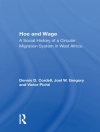This book explains why the best way to understand the Jewish historical experience is to look at Jewish people, not just as a religious or ethnic group or a nation or ‚people, ‚ but, as bearers of civilization. This approach helps to explain the greatest riddle of Jewish civilization, namely, its continuity despite destruction, exile, and loss of political independence.
In the first part of the book, Eisenstadt compares Jewish life and religious orientations and practices with Hellenistic and Roman civilizations, as well as with Christian and Islamic civilizations. In the second part of the book, he analyzes the modern period with its different patterns of incorporation of Jewish communities into European and American societies; national movements that developed among Jews toward the end of the nineteenth century, especially the Zionist movement; and specific characteristics of Israeli society.
The major question Eisenstadt poses is to what extent the characteristics of the Jewish experience are distinctive, in comparison to other ethnic and religious minorities incorporated into modern nation-states, or other revolutionary ideological settler societies. He demonstrates through his case studies the continuous creativity of Jewish civilization.
Inhaltsverzeichnis
Introduction
1. Jewish History as the History of Jewish Civilizations
Introduction: The Problem of Jewish Continuity
The Civilizational Approach to Jewish History
The Presupposition of a Civilizational Perspective—Culture, Ontology, and Social Dynamics
The Axial Age Civilizations
2. The Distinctive Characteristics of Jewish Civilization in a Historical and Comparative Perspective
The Ancient Israelite Civilization
The Crystallization of Jewish Civilization in the Period of the Second Commonwealth
Some Comparative Indications: The Crystallization of Christianity and Christian Civilization
The Distinctive Characteristics of Islamic Civilization
3. Basic Themes and Institutional Formations of Exilic Jewish Civilization: The Inner-Civilizational Perspective
The Historical Setting
Institutional Changes
The Predominance of the Oral Law (Halakhah)
The Transformation of the Basic Themes of Jewish Civilization and the Crystallization of New Themes
The Ideology of Galut and Eretz-Israel: Messianic Redemption and Martyrdom
Heterogeneity and Dynamics within the Rabbinic Mold
Some Concluding Observations on the Specificity of the Jewish Historical Experience: The Ancient and Medieval Periods
The Historical Experiences of the Three Monotheistic Civilizations and the Impact of Heterodoxies: Some Comparative Observations
The Jewish Historical Experience in Medieval Times in a Comparative Framework: Heterodox Potentials and the Sovereignty of the Court
The Social Conditions of the Tradition of Sovereignty of the Court and Civility in Medieval Jewish Communities
4. The Disintegration of the Medieval Jewish Civilizational Framework in the Modern Period and the Integration of Jews in European Societies
The Period of Transition: Sixteenth to Eighteenth Centuries
The Modern Period: Introduction
The Major Directions of Jewish Collective Life and Cultural Activities: Haskala, Reform, Assimilation, and Jewish Scholarship in Western and Central Europe
Variations among Different Western and Central European Jewish Communities: Heterogeneity and Common Orientations
Modern Jewish Historical Experience in Eastern Europe
5. The Incorporation of the Jews in the United States
Introduction: The Distinctive Characteristics of the Jewish American Experience
The Specific Premises of American Civilization; American Pluralism; and the Incorporation of Jews
Jewish Collective Activities; Incorporation in the Mainstream of American Life; Modes of Assimilation
The Paradox of Jewish American Life: Communal Activity and Drifting Away
6. Modern Jewish National Movements and the Zionist Movement
Introduction
Zionism as a National Movement: The Revolutionary Dimension
Specific Dimensions of Zionist Nationalism: Territory, Language, and History
Specific Characteristics of Zionist Revolutionary Orientations
The Zionist Vision and the Basic Themes of Jewish Civilization: Exile, Return, and Redemption
The Diaspora in Zionist Ideology
The Reconstruction of Collective Identity and Traditions: Zionism and Religion
7. The Formation and Transformation of Israeli Society
The Formation of Israeli Society and Its Initial Institutional Mold
The Disintegration of the Initial Institutional Mold of Israeli Society
Israeli Society in Transition
8. The United States and Israel: An Essay in Comparative Analysis
Some Common Characteristics of the United States and Israel: Constitutional, Modernizing, Revolutionary, Ideological Societies
Ideological Differences between the United States and Israel: Individualistic versus Collective Orientation
Ideological Differentiation between the United States and Israel: Primordial, Historical, and Religious Components in the Construction of Collective Identity
Differences between the United States and Israel: Size, Political Ecology, and International Relations
9. Concluding Observations: The Jewish Experience in the Modern and Contemporary Eras
The Two Poles: The Holocaust and Heterogeneity of Jewish Experience
The Major Modes of Jewish Experience in the Modern Diaspora
The Jewish Experience in the Contemporary Era
The State of Israel and the Problem of Its Centrality in Jewish Life: The Complexity of Israel-Diaspora Relations
Concluding Remarks: The Challenges before Jewish Civilization in the Contemporary Era
Notes
Index
Über den Autor
S. N. Eisenstadt is Rose Issacs Professor of Sociology at The Hebrew University of Jerusalem. He is the editor of The Origins and Diversity of Axial Age Civilizations, also published by SUNY Press.












